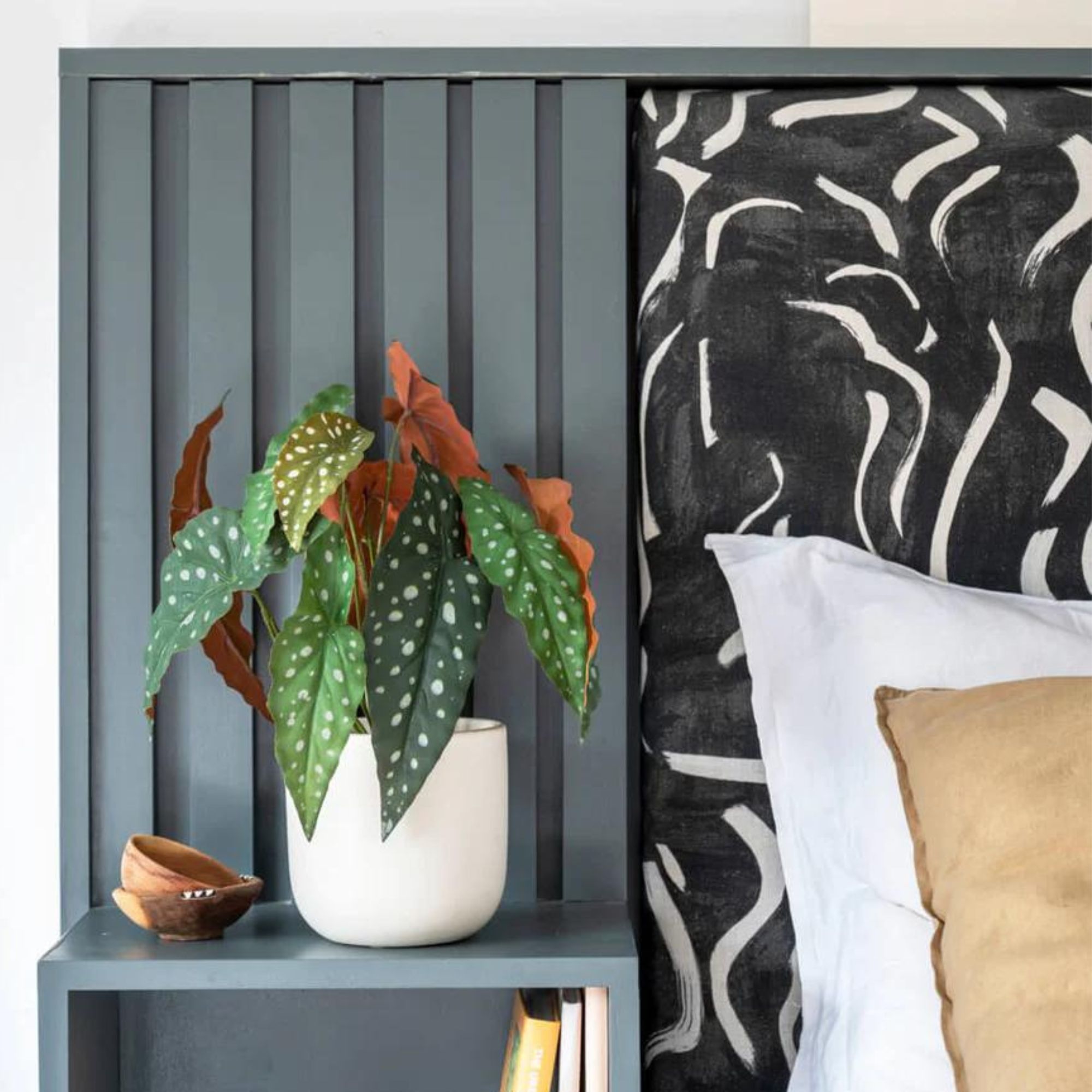How to care for a polka-dot begonia - the prettiest, low-maintenance plant you'll ever care for
Brighten up grey days with a polka-dot begonia that combines dual-tone leaves with sparkling silver spots

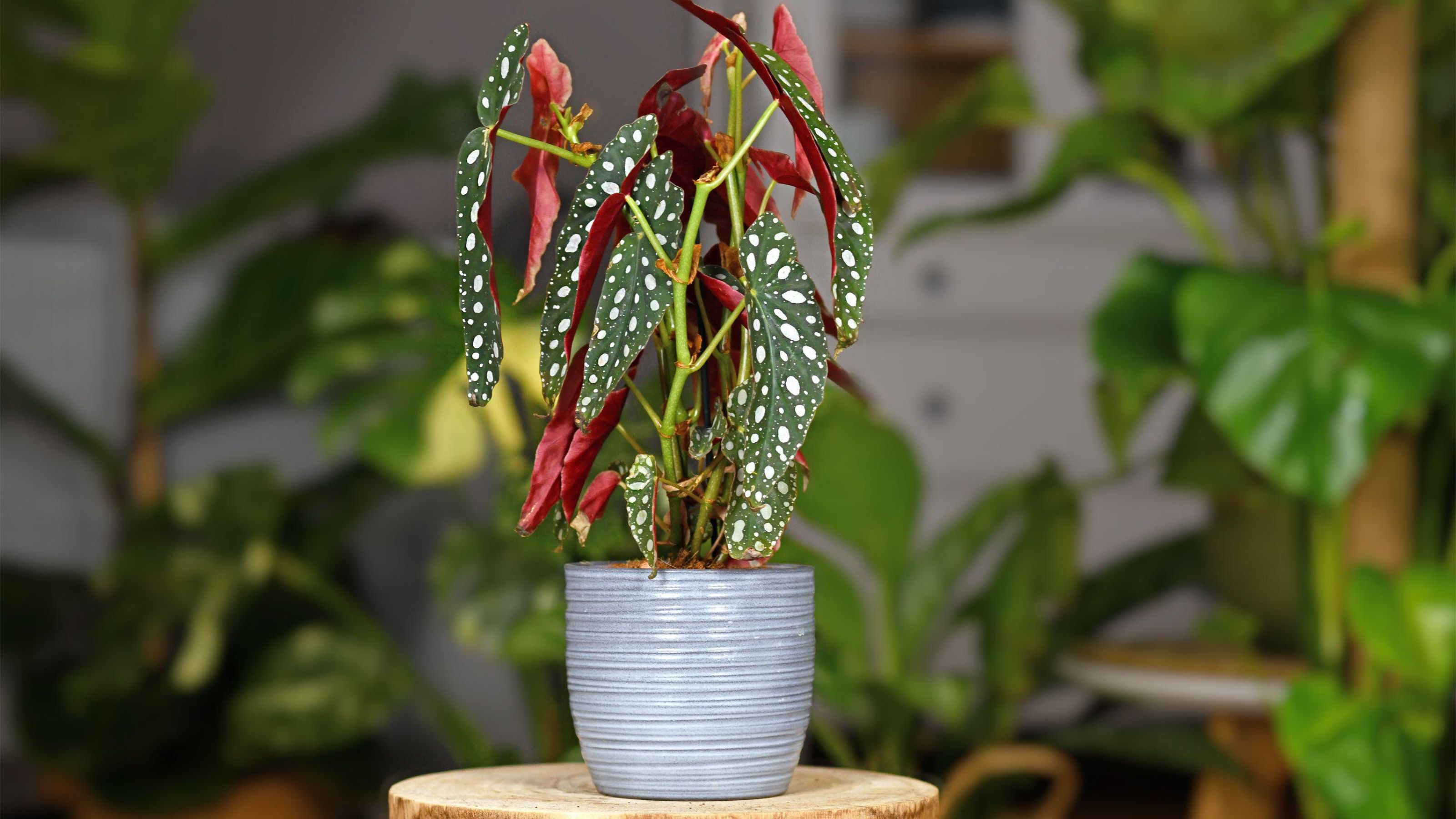
- What you will need
- Where to buy polka-dot begonias
- Do polka-dot begonias like sun or shade?
- Where should I put my polka-dot begonia?
- How often should you water begonias?
- Can you water begonias too much?
- Do polka-dot begonias like to be root bound?
- Should I prune my polka-dot begonia?
- How do I propagate a polka-dot begonia
The polka-dot begonia is a houseplant that will really stand out on your shelf.
One of the most stunning living room house plant ideas, with its deep burgundy undersides to the glittery silver spots that shine against the deep green leaves, polka-dot begonia – or Begonia maculata – is unlike any other in your houseplant collection.
If this isn’t enough to convince you, then their low maintenance should be – less is more. ‘As tropical plants, they need warmth, humidity and care when watering, which is repaid by the glorious appearance of their leaves,’ says Jessy Edgar, owner at Sprouts of Bristol.
How to care for polka-dot begonias
One of our favourite houseplant ideas, polka-dot begonias are a beautiful addition to any home. And they are a colourful houseplant that's easy to care for, too.
‘Polka-dot begonias have a bold dramatic look and can easily add a lot of interest to your houseplant collection. Its distinctive shiny spotty leaves with deep red undersides certainly helps it make a statement. These Begonias also flower every year with stunning clusters of pink and white flowers,’ says Sophie McVey, manager at Grow Urban.
With its beautiful deep red, green and silvery colours, polka-dot begonias would look stunning paired with Christmas cactus for a vibrant, festive display.
What you will need
- Polka-dot begonia
- Plastic pot with drainage holes – one size larger than the size of the plant bought
- Decorative pot without holes
- A liquid houseplant fertiliser, for example, Baby Bio Houseplant Fertiliser on Amazon
- A trowel
- Houseplant compost, such as Westland Houseplant Potting mix on Amazon
Where to buy polka-dot begonias
If you're hoping to buy a houseplant that will stand out from the most Instagrammed houseplants, the polka-dot begonia is a must! However, it is important that you purchase your plant from a reputable store – whether your local garden centre or one of the best online shops for buying houseplants.
Sign up to our newsletter for style inspiration, real homes, project and garden advice and shopping know-how
Do polka-dot begonias like sun or shade?
Like prayer plants, polka-dot begonias are naturally found in the Brazilian rainforests. For this reason, polka-dot begonias love warm and humid environments with a healthy dose of bright indirect light.
These plants are best placed near an East or West-facing window, or slightly further into a South-facing room. It needs medium-bright light but should be protected from direct sun,’ explains Sophie McVey. ‘Turn regularly your begonia plant as it likes to move its leaves to face the sun.’
‘This plant is tolerant of shade, so it will thrive in an area with comparatively low lighting, but not excessively dark,’ adds Tom Cook, houseplant buyer at British Garden Centres.
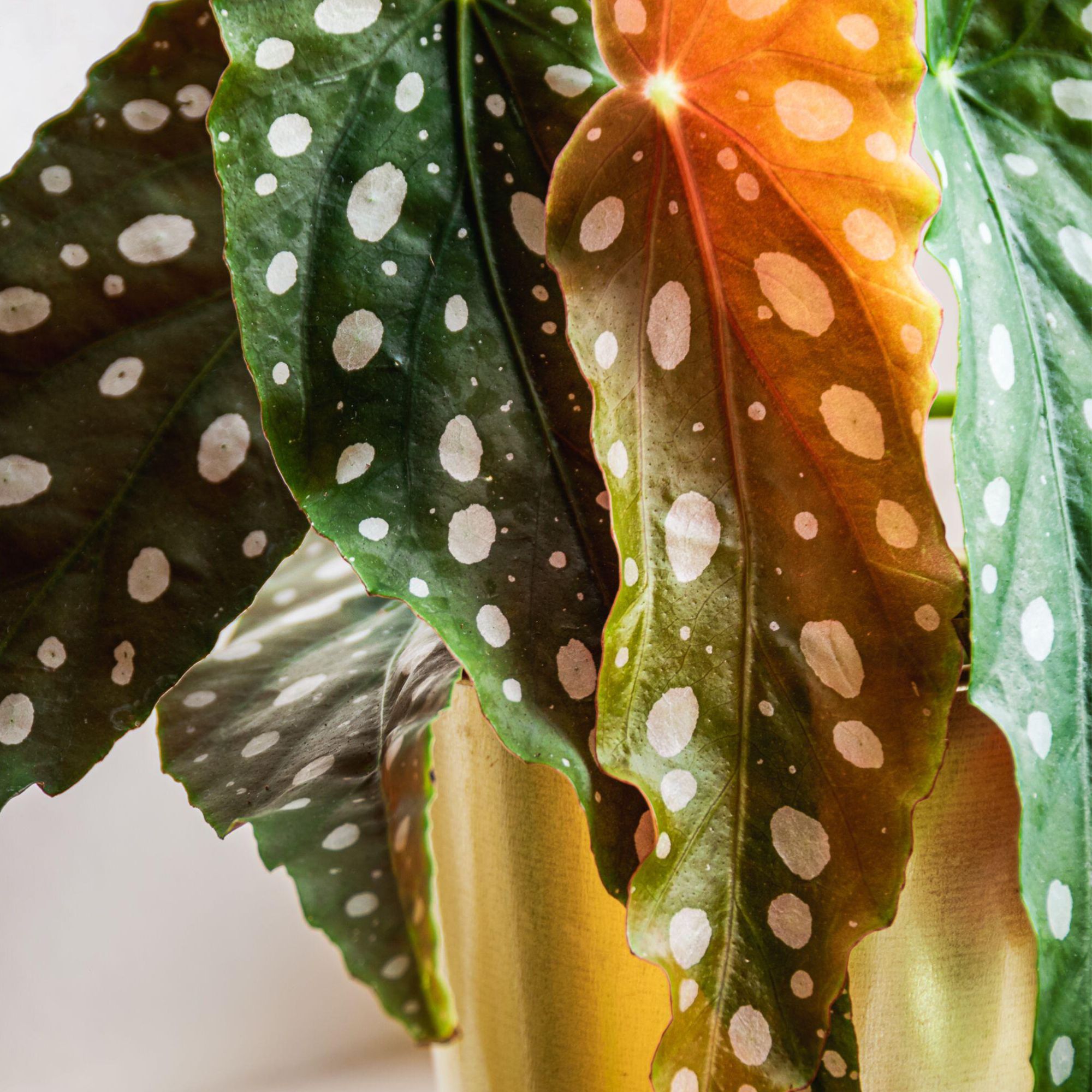
Where should I put my polka-dot begonia?
Its affinity for warmth and humidity means that the polka-dot begonia does especially well in bathrooms and kitchens. They can be grown elsewhere but will benefit from misting or being stood on a tray of moist pebbles.
‘Aim for a temperature range of 12-26°C; don’t let it drop below this in winter,’ says Edgar, owner at Sprouts of Bristol, ‘but ‘avoid placing too close to a radiator, as this will dry it out too much.’
When choosing a spot for your new houseplant, it is also worth noting that
it can be toxic if ingested so keep it out of reach of pets and children. If this is of concern, then perhaps look for a pet-friendly houseplant alternative.
How often should you water begonias?
‘Begonias are quite thirsty and like their soil to be damp but not soggy,’ says Morag Hill, co-founder of The Little Botanical. ‘Our tip would be to water as soon as the top of the soil feels slightly dry. Approximately once a week. They love extra humidity, grouping multiple plants together is a great tip for this as they’ll create humidity for one another.’

Can you water begonias too much?
Yes, you can water begonias too much, in fact, this is the most popular cause of failure.
If your polka-dot begonia isn’t looking too happy, then is likely that you’re overwatering. The easiest way to find out is to test the soil with a finger and feel whether it is waterlogged or overly wet.
‘To save an overwatered plant, remove any dead or dying foliage using clean scissors or a knife and check the root ball for rot, root rot turns the roots a darker brown colour and they’ll feel squidgy. Any root rot will also need removing. Repot if necessary and ensure the plant isn’t sitting in damp overly soggy soil,’ advises Natalie Bourn, manager at Between Two Thorns.
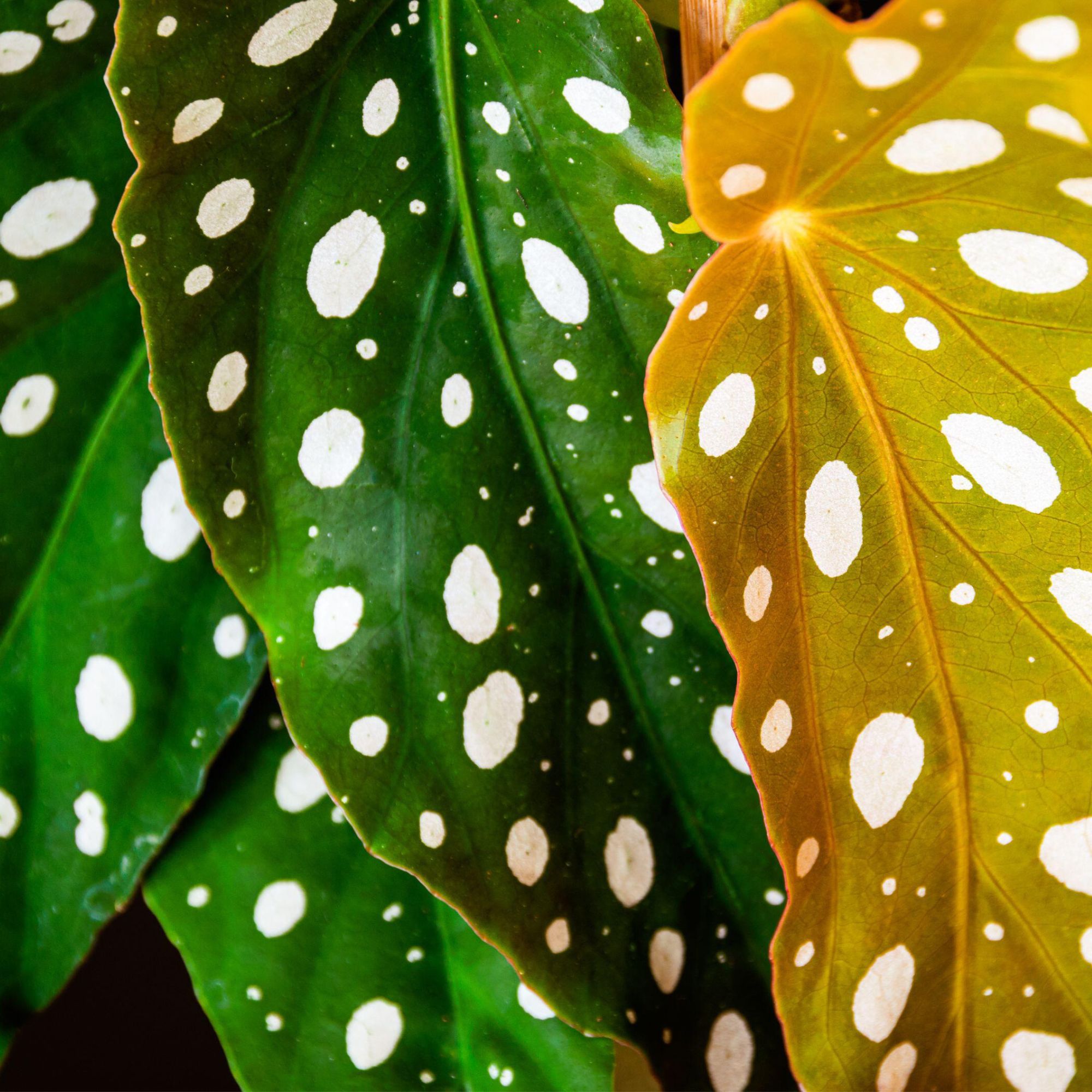
Do polka-dot begonias like to be root bound?
Yes, polka-dot begonias do like to be root-bound.
‘We would suggest repotting only once they are really outgrowing their pot, they actually quite like to be slightly rootbound as this encourages the flowers to bloom. Pay attention to the size of the plant, if the plant has grown so much it looks too big for its pot – it needs to be repotted,’ says Morag Hill.
After repotting, don't put the plant back in its original spot – instead, choose a position with slightly less light. According to Anther + Moss’ founder, Timothy Sherratt, this is one of the most common mistakes when repotting houseplants.

Should I prune my polka-dot begonia?
It is essential that you keep your polka-dot begonia in check with regular pruning. ‘Begonia maculata prefer to be pruned yearly, after flowering. This helps to keep the plant healthy, divert energy into new growth and keep the plant bushy,’ advises Natalie Bourn, manager at Between Two Thorns.
‘You can use the sections you have pruned from the plant as pieces to propagate.’ To do this, simply remove any areas that look leggy, and shape so it is aesthetically pleasing.
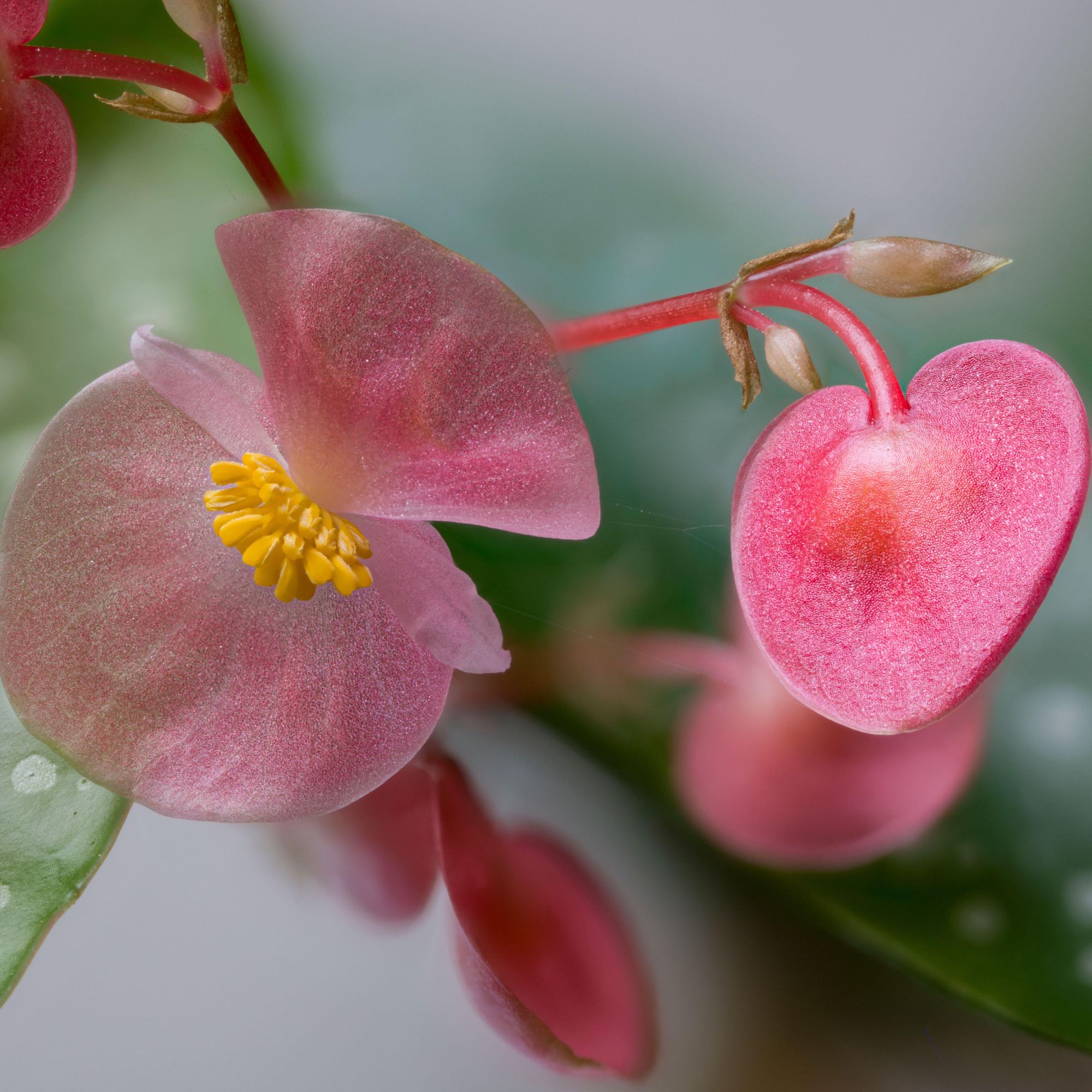
How do I propagate a polka-dot begonia
There are a few ways to propagate polka-dot begonias. The easiest way to do this is with cuttings. ‘Cut about one inch above a node where a leaf meets a stem. Then, place the stem cuttings in damp moist, fresh soil or a glass of water to root,’ says Tom Cook, houseplant buyer at British Garden Centres.
‘If you are propagating in water, wait several weeks until the roots are a few inches long, and then plant in soil.’
If you have a large plant, then you can also try dividing it –this is ideal if your plant is too big for its existing pot but you don’t want to size up any more. To divide your plant, remove it from the pot and clear away the soil. Identify a section that will be easy to separate from the main body – it’s okay if you need to cut through some smaller roots, so long as both plants are left with a healthy amount of roots. Then pot in new soil.

Holly is one of Ideal Home’s content editors. Starting her career in 2018 as a feature writer and sub-editor for Period Living magazine, she has continued this role also adding regular features for Country Homes & Interiors and the Ideal Home website to her roster. Holly has a passion for traditional and country-inspired interiors – especially kitchen design – and is happiest when exploring the countryside and hills of the Lake District. A keen gardener, she is a strong believer that you can never have too many houseplants.


